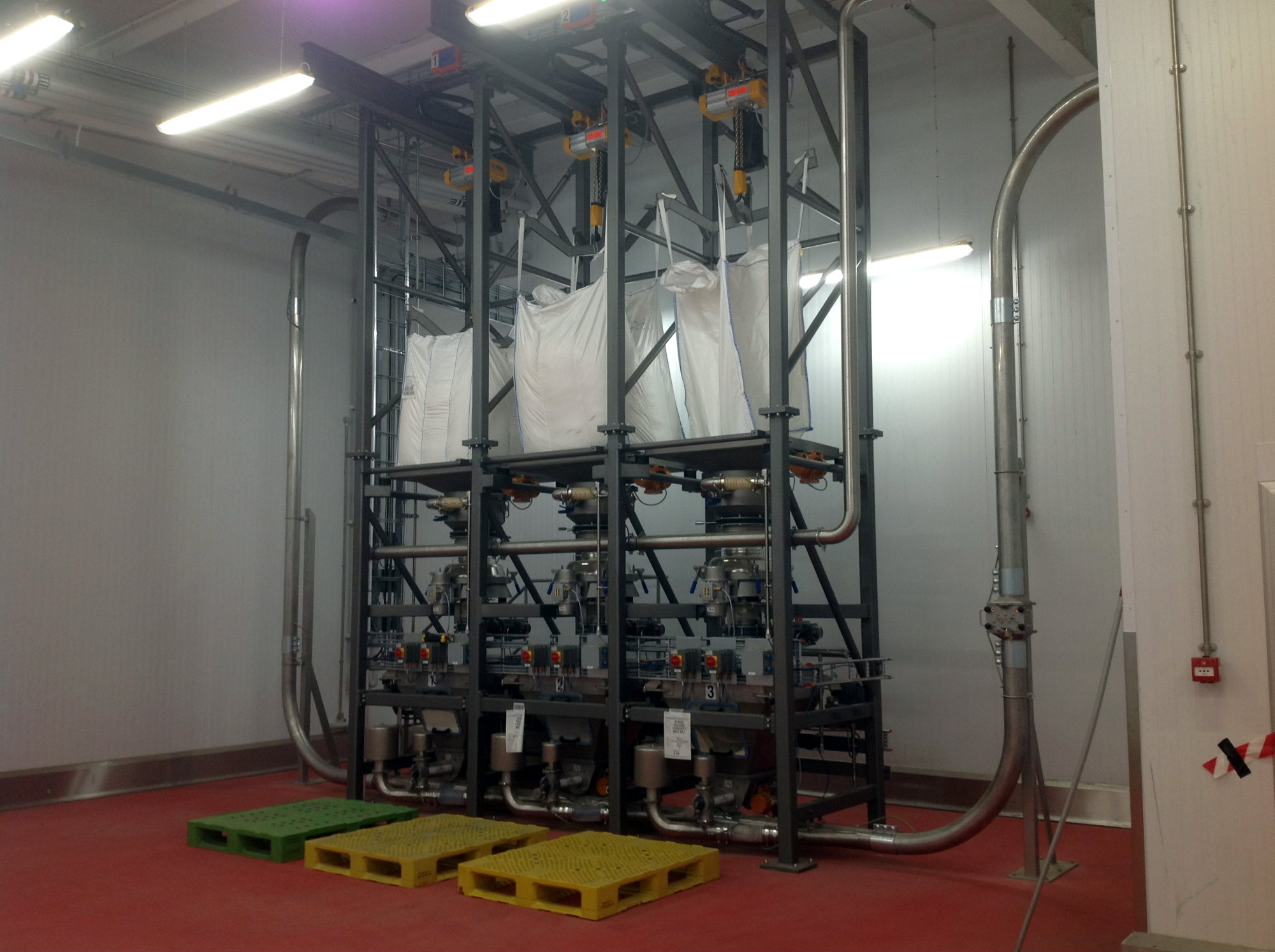Dry materials handling project increases production capacity at large doughnut manufacturer
OAL designed, installed and automated a new dry material handling system comprising silos and big bags to increase doughnut production to 50,000 per hour at market leading food manufacturer.
OAL designed, installed and automated a new dry material and liquid handling system comprised of silos, big bags and IBC's to increase doughnut production to 50,000 per hour at market leading food manufacturer with a total project cost of c£870,000.
The new silo designed and installed by OAL at the bakery
Customer
Our customer is one of the largest manufacturers of doughnut and other baked goods in the UK and is a part of an internationally recognised food business.
Challenge
The bakery wanted to improve the handling of both their liquid and dry ingredients and were seeking to:
Minimise the manual handling of ingredients to improve health and safety.
Reduce operating costs associated with ingredient handling.
Improve accuracy of mixes.
The supplier and the solution had to take into consideration:
The bakery operates 24 hours a day, 7 days a week, therefore it was crucial that the manufacturer trusted their supplier to work to the agreed schedule to ensure that it did not disrupt their everyday operations.
The manufacturer of doughnuts uses multiple dry and liquid materials from various packaging formats, for instance; flour, sugar, yeast and water. The system had to be flexible to work accurately with multiple ingredients of various particle sizes.
The new material handling system was to feed a new batch mixing system with a capacity of 50,000 doughnuts per hour production line.
Solution
Three Big Bag Stations with Sifting
OAL was chosen to supply the automated ingredient handling system based on a comprehensive solution to the ingredient handling system and successful visits to reference sites demonstrating the quality of work, with strong reference to our hygienic design principles. The OAL system is designed to minimise the loss of ingredients through the transfer lines and eliminate the incorrect batching of ingredients. Interesting aspects of the project included:
Silo, big bag & IBC feeds
The ingredient system delivers bulk flour from a silo, concentrates from FIBC's (Flexible Intermediate Bulk Container) as well as liquids from both IBC (Intermediate Bulk Container) and existing plant feeds forming a total of eight ingredient supply points.
Automated ingredient supply points
An HMI and recipe management system make it simple for users to monitor their production line including the ingredient supply points. The flour, powders (FIBC Big Bag Stations) and hand-tips feed a single line that is then split via a diverter valve (PDV100) to supply Mixer 1 and 2 receivers. The receivers then supply the mixers with the powder based ingredients. Each of the liquids has dedicated supply lines to the mixers directly. The control system then automates the flour, powders and liquid additions. When hand-tips are required, the system will prompt the operator for the desired ingredient.
Commissioning
Upon the completion of all installation work, OAL was responsible for ensuring that the plant and system were tested and certified for operation before the project was signed off. To ensure that the system continued to work as required, OAL also offered the manufacturer an engineer on site for two weeks post installation so the initial production could be set up for product trials and validations offering them further peace of mind with their new system.
Results
OAL successfully manufactured, installed and commissioned a dry materials handling system for a large doughnut bakery. OAL worked closely with the project coordinators to ensure that their product and material specification had been met so it was easier to integrate the new system into their current factory set-up. The doughnut production line can now store and transport both dry and liquid-based ingredients more efficiently using OAL’s tried and trusted system.


